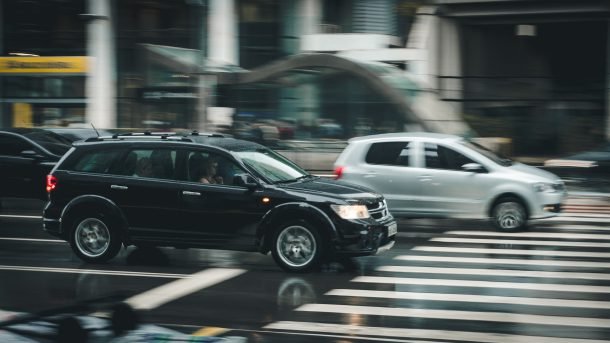QOTD: What's Your Lower Limit?

No, this isn’t a question about resurgent — and somewhat ironic — demand for the Geo Metro and its tepid ilk, but Timothy Cain probably has something to say about the chances of success of a latter-day model. Rather, this is a question about the way you drive, and the decisions of those who govern us.
We’re all cool with who we take orders from, right? Okay, good. Lest this writer stand accused of not getting to the point in a swift and efficient manner, here goes — are you willing to get to your destination in a less swift manner?
Maybe some explanation is in order. In my online journeys yesterday, a somewhat ranty piece published on the National Motorists Association blog caught my eye, and with good reason. The title read “I Can’t Drive 25.”
Apparently there’s a push in the Greater Boston Area town of Saugus to lower the municipality’s default speed limit from 30 mph to 25 mph, a law Boston itself passed a couple of years back. To our Canadian readers, that means a reduction on city streets (unless otherwise posted) from 48.3 km/h to 40 km/h. This would be in the interest of public safety, of course.
Few cities have escaped the movement to reduce speed limits in order to create safer, more “liveable” streets, often in the complete absence of other road infrastructure improvements. Lower the default limit and paradise blooms, apparently. Tulips burst forth from cracked sidewalks. Sometimes it works; other times it just leads to increased ticket revenue. In fairness, a 2018 Insurance Institute for Highway Safety study found that, in Boston, the speed limit reduction brought about a 29.3 percent decline in the number of speeding vehicles travelling 35 mph or higher. Whether that brought about a reduced accident/injury rate remains to be seen, though other studies say yes, it will.
In my neck of the woods, and indeed in Boston (and other cities too), there’s pressure to go even lower: 20 mph (32.2 km/k) in Boston and 30 km/h (18.6 mph) in my city. Which begs the question: how slow are you willing to drive before pushing back — if indeed you would?
In some instances, the backers of such speed limit changes are less concerned with public safety and more interested in disincentivizing/punishing driving as a whole, though they hold their true motivation close to the vest. Such proponents are the ones who can be heard lamenting the fact that roads exist, as they encourage car use (as well as make bus transit and the delivery of food to their local store possible). As if roads weren’t messy, dangerous places that existed long before the advent of the automobile. These people rarely leave the downtown portion of their respective cities, unless it’s to go to the airport for a flight to the downtown portion of another major city, from which they will return with grand stories about how people in Northern Europe and Asia do things (the proper way).
My father worked for years as a traffic engineer, mapping out intersection designs and traffic light signal timing for the city that employed him. One thing that annoys engineers more than anything else is when a city politico, eager to grease a squeaky cadre of constituents, propels a speed limit change through city council in the interests of career salvation. Engineers design roads with efficiency and safety in mind. Do pedestrians have ample time to cross the street, and places in which to do so? Will the road handle the anticipated traffic flow at peak times without exceeding capacity? On and on the considerations go.
If a public roadway is marked 30 mph or 45 mph or 65 mph, it’s because it was engineered and designed to carry vehicles at that speed. Stopping distances and buffer zones between vehicles and between vehicle and curb were considered. Thus, lowering the speed limit on certain roads means the city spent unnecessary money during its construction. It also means motorists are driving on overbuilt roads that, by design, encourage a higher speed. Driving a divided, four-lane non-freeway roadway with long gaps between intersections feels normal at 50-60 mph, but lower the speed to 40 and something feels off. You feel like you’re hardly moving. There’s a divided, four-lane stretch with a curve near my house that carries an 18.6 mph (30 km/h) limit, and absolutely no one abides by it. They do, however, drop their speed somewhat, fearing the Man. Maybe that’s what it’s all about.
A speed camera on that stretch would amount to a shakedown.
While streetscape improvements (speed bumps, bollards, lane reductions, curb bulb-outs) can make a reduced street speed feel more natural, not all cities and towns have the cash to make that happen. Changing a sign is far cheaper.
In the absence of a narrower, more obstacle filled street designed to slow you down in a more organic fashion, do you find a very low limit to be a distraction in itself? Maybe 25 mph is doable, but 18.6 mph? An exceedingly low speed would require this writer to drive along in second gear or the bottom of third, neither of which is ideal for smoothness and consistency of speed. As it doesn’t feel natural, it’s quite possible your eyes might spend more time on your gauge cluster and not on the road ahead.
What’s your take on this matter? How slow are you willing to go?
[Image: RU2 Systems]

More by Steph Willems
Latest Car Reviews
Read moreLatest Product Reviews
Read moreRecent Comments
- ToolGuy Let's count the poor decisions: Honda 18 model years past peak Honda. Ohio. Following too closely ('rock on the highway' doesn't leap up and attack your vehicle by itself, it is riding on a vehicle or thrown up by a vehicle, and you should be alert to this). Ohio. Not enough doors. Choosing to expand family -- in Ohio. 😉Engine bay picture: At least take a shower before your glamour shot lol.
- ToolGuy Took me a minute to post; had to go back and see which account I was using the last time I commented on this topic (consistency is important). Thank you for your patience.
- ToolGuy Ok wow, just wow. I used to live in America. Land of the free -- have I heard that somewhere? And here come TTAC writers and commentariat goose stepping in lockstep, dancing on the grave of liberty. Didn't your dysfunctional homeowners association get all that government overreach out of your system? I thought we won WW2, guess I was mistaken.
- Dartman If one is so hellbent on drawing attention to themselves just mount a big “Trump 2024” or “Black Lives Matter” flag (your choice) on your truck and call it day. Lot cheaper, same result.
- AZFelix I'd buy a 'harlequin' edition if it was composed of a company's complete palette of greys and silver.Family had a couple of Pontiacs in teal and purple in years past. I was not a fan.My current ride is Lakeside Blue.



































Comments
Join the conversation
The only place I have dutifully obeyed the speed limit, even though it some instances drops to 5 MPH, is county route 340 in far northwestern Maui.
As others have mentioned it is clear that many do not understand the physics of time and distance. In the area that I live the limit is 25 because there are children playing, bicyclists, horses, dogs, lots of driveways and things that restrict vision like trees, fences, and curves. The houses that are farthest away, from where the speed limit changes from 45 to 25, are about 1/2 mile. Yet there are many who drive at 40-45 so they can get home what? 30 secs quicker. Every other year the Sheriff or Highway Patrol put one of those speed trailers, in the photo at the top of the page, on the road about 1/8 mile past the 25 sign. I would frequently see someone driving in front of me get the "Your Speed" 40 (+). Even on a trip of 30 miles going 70-75 vs 65 will be only a few minutes faster.